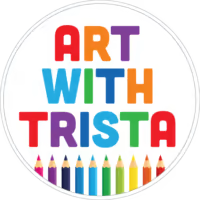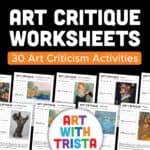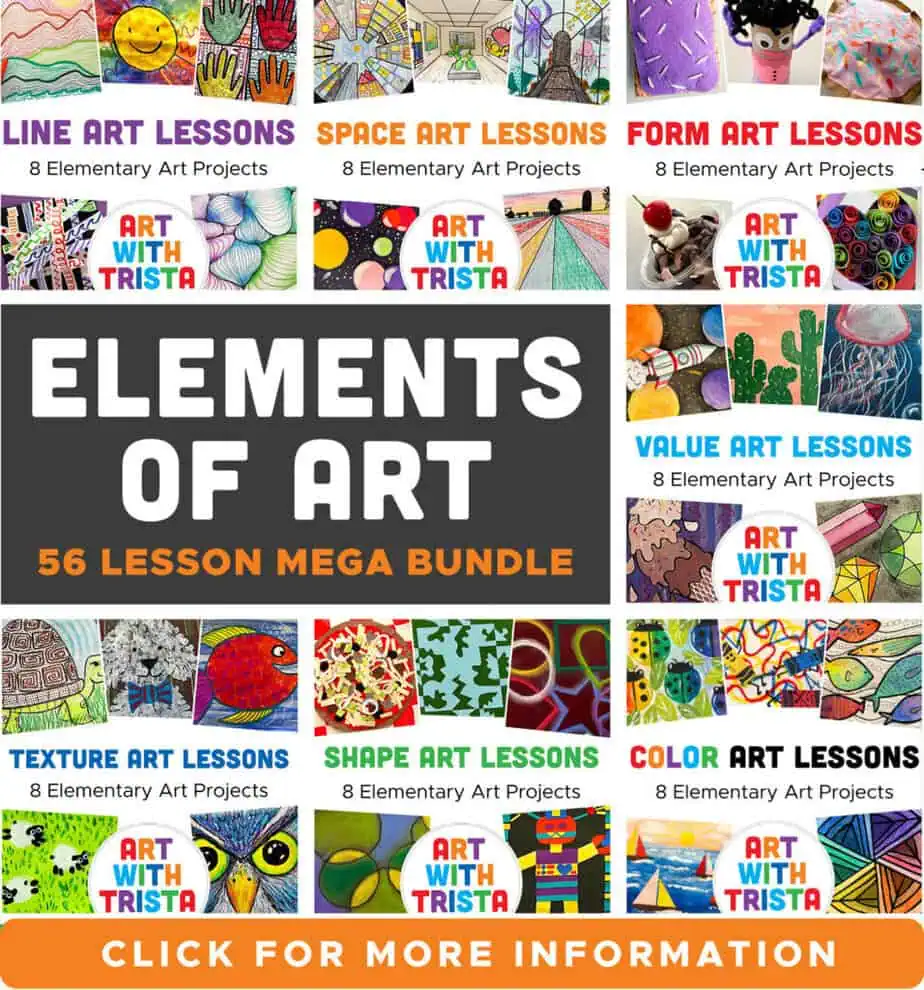There are many methods to critique art but my current favorite is the ‘Think, See, Wonder” method. Here’s what it is, why I like it and how I use it in the classroom.
What is the ‘See, Think, Wonder’ Art Critique Method?
The first step is See. Start by describing only what you can observe directly in the artwork. This step is all about objective observation—no interpretation. Examples of this step could include statements like “There is a woman and a young girl. The sky is dark. There are a lot of bold lines.”
Step 2 is Think. Now, students move from observing to interpreting. Have them use what they saw in the ‘see’ step to form questions or ideas about the artwork’s meaning or message. Examples could include “I think the woman and young girl are mother and daughter. I think the dark sky represents sadness.”
The last step is Wonder. Have students think about what the artwork makes them curious about. These will be open-ended questions that there probably will not be answers for. Examples of this step could include “I wonder why they look sad. I wonder why they are outside.”
More Information and Reflection
After critiquing the artwork using “See, Think, Wonder” I like to provide my students with some background on the artist. I read a short biography about the artist including information about where they were born, their style or genre they are associated with or any information about their art journey. I like to do this step after the first three steps so that students are answering the first prompts with no information other than looking at the artwork. Then I ask the students to reflect on the information they just learned and ask them if it makes them “think” or “wonder” anything else about the artwork.
Why I Like This Method
“Think, See, Wonder” slows students down and encourages critical thinking without requiring technical art knowledge. I think it helps build visual literacy by promoting careful observation (rather than quick judgment). It also encourages students to form their own opinions, promotes curiosity and can lead to interesting classroom discussions.
How I Teach It
I made a series of worksheets for use in my classroom that allows students to work independently. Each page features a work of art created by well-known artists across many genres and styles. Each component, See, Think and Wonder is listed with guiding questions and lines to write their thoughts. In addition, a short biography about the artist is included. After students have learned information about the artist, they are asked additional Think and Wonder questions they may have after learning about the artist.
The questions can be answered individually, in small groups or discussed in a large group. I also created a PDF presentation with each image, artist and title so I can project the artworks in class for large group discussion and so students can see the artwork in color because sometimes I print the worksheets in black and white.
My Art Critique Worksheet Bundle is available here
Thanks for Reading, Trista
If you liked this How to Critique Art post, please subscribe by clicking here.
Check out my How To Page for more posts like this.
